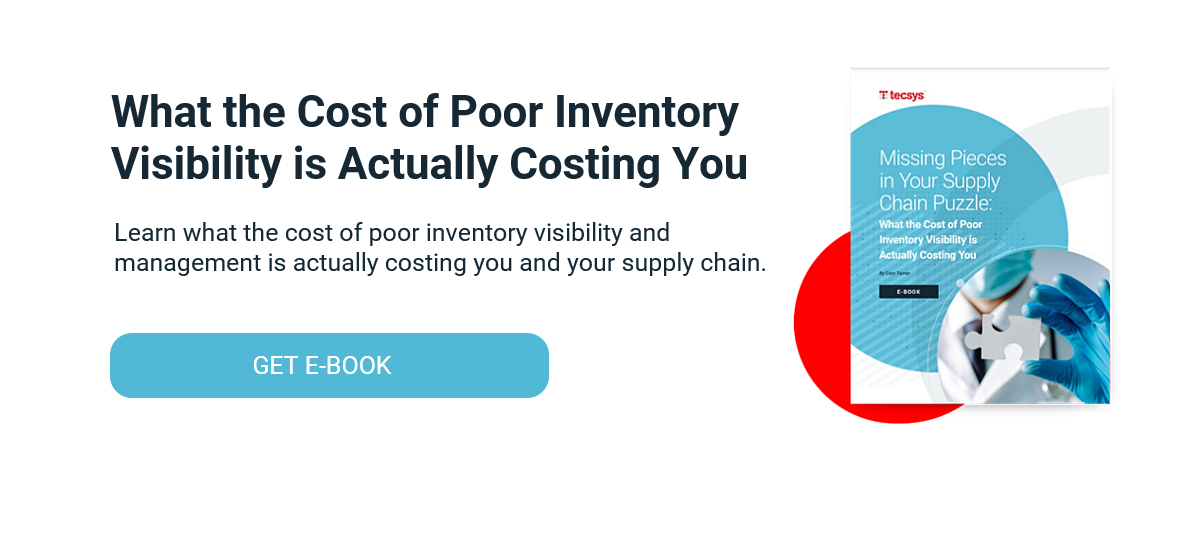Are Inventory Management Issues in Healthcare Supply Chains Blurring Your Visibility?

Many healthcare supply chain leaders believe they have visibility into supply inventory. With all of the different point of use systems for inventory management and par level replenishment throughout their hospitals or health systems, they feel they’ve got it covered.
In reality, when managing inventory through the use of multiple systems that lack integration, they may have visibility to supplies within each system, but not overall.
For example, they can see products in the warehouse through one system, but in order to determine where those items went from there, they must go to another system and generate a report.
Without an enterprise-wide, supply chain management (SCM) solution that monitors and tracks inventory in all areas, including the movement of items from one area to another all the way through to consumption, therein lies inventory management issues in healthcare supply chains.
Workarounds Add More Work, Cost and Confusion
To compensate for this lack of overall inventory visibility, the supply chain often takes the approach of workarounds to ensure clinicians have the supplies they need to support patient care.
Let’s say a doctor needs a specific product for a case the next day. If a supply chain professional can’t definitively determine whether that item is contained within inventory — whether it is in the warehouse, a supply closet or in a nurse’s personal “just in case” supply stash — they will have to jump through hoops to get it from the distributor or manufacturer in time.
The facility pays exorbitant shipping fees to overnight the product and buyers scramble to determine when and where it will arrive so they can get it where it needs to go. Maybe someone eventually realizes that specific product was there all along, where it expired on a shelf out of sight.
You Don’t Know What You Don’t Know
Perhaps one of the most significant consequences of inventory management issues in healthcare supply chains is that it can hide substantial and costly supply chain failures. Without a way to track products in real time as they move through a healthcare organization, supply chain leaders can’t easily identify breaks in that flow.
There is no easy way to determine whether clinicians are recording consumed supplies at the point of use (POU) for charge capture and patient billing. In some cases, a healthcare organization could be losing out on hundreds of thousands of dollars in reimbursement and not even know it.
There is also no easy way to determine whether the organization has expiry problems if supply chain professionals have no visibility to expiry dates. Products could be expiring on shelves only to be thrown away, resulting in tremendous waste.
Upon gaining visibility into its inventory, Munson Healthcare discovered it was losing $250K annually in misplaced and expired inventory in its cath labs.
Even more significant is the chance that expired products could be used on a patient, potentially harming that individual. Lack of visibility at the product level also makes it more challenging to identify and remove recalled items and conduct adverse event reporting.
It’s Time to Uncover the Inventory Management Issues in Healthcare Supply Chains
Supply chain serves as a critical support function to the clinical world and supply chain professionals are known to do everything in their power to ensure clinicians have the supplies they need at the patient’s bedside.
For those health systems and hospitals that lack inventory visibility, this means a great deal of wasted time, effort and money as supply chain professionals struggle to determine whether the required supplies are on hand, where they reside and whether they are safe for use.
It’s time to finally give supply chain leaders the technology they need to effectively manage inventory, rather than forcing them to make assumptions about the whereabouts and availability of supplies.
A holistic SCM solution takes the disruption out of inventory management issues in healthcare supply chains, offering organization-wide inventory visibility and control, as well as real-time insights and analytics to identify upstream issues before they cause downstream impacts on clinical and financial outcomes.




